Go Books: DDK Guide – Going Wide (20 kyu – 11 kyu)
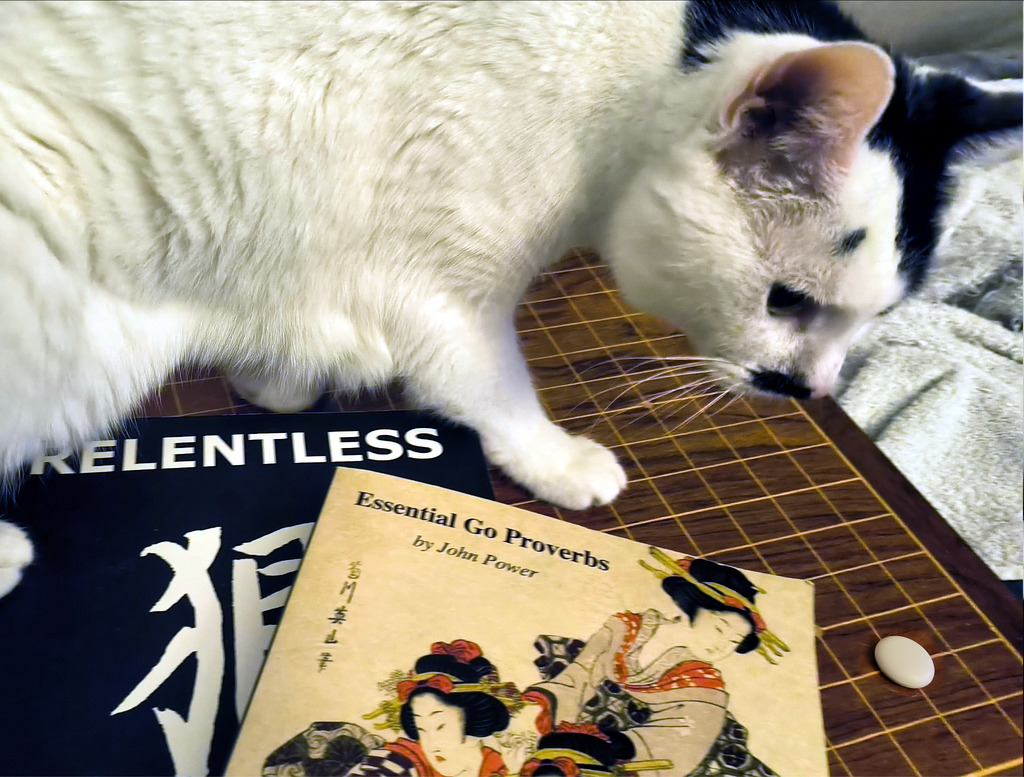

Previous parts:
Magical Book Club Introduction
Absolute Beginner Guide (30 kyu – 21 kyu)
Well done on making it this far! Learning to navigate the vast possibilities of a Go board is no easy feat, but you deserve to feel accomplished about every step of the way!
During your Go journey, your focus, preferences and ways to think about the game will constantly change. Like water, your Go games will flow very differently while you climb up the ranks of your preferred Go server or your Go association.
After learning basic concepts as a beginner that are more or less the same for everyone, the next steps can be very different for any learner. Do you find pleasure in the endless strategic options joseki and openings have? Do you enjoy playing hundreds of games? Maybe tsumego puzzles tickle your brain just the right way? Or maybe you find solace in the clear mathematical solutions endgame optimization provides? There is a lot to explore and there really is no wrong approach as long as you enjoy yourself, but in my experience, it is likely that your next Go steps might look like this:
Double Digit Kyu 20-11k: Going Wide – Exploring basics in all areas.
Single Digit Kyu 10-4k: Going Deep – Finding areas that suit you to specialize in
Reaching Dan 3k-1d+: Going Beyond – Exploring concepts beyond your current understanding of the game
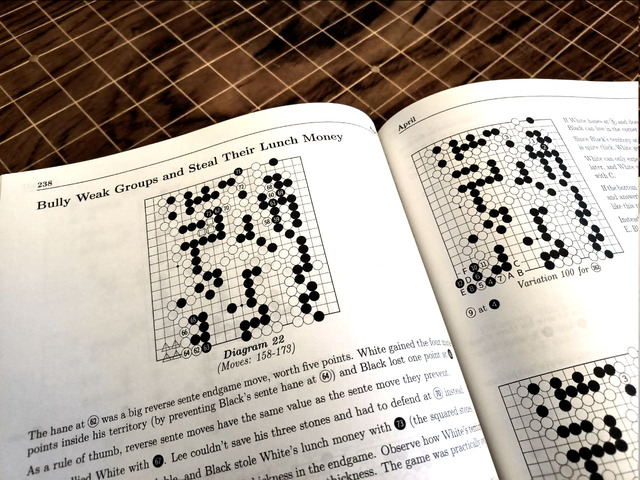
In the DDK range, big mistakes happen a lot, but that’s perfectly fine. Some players might have a pitch perfect opening, but lose 50 points in endgame (Fun fact: my autocorrect wanted to correct “endgame” to Edamame, so if anyone wants to invite me to Edamame practice, please do not hesitate). Others might have incredibly good fighting instincts, but no good concepts for mid game strategy. But all the players you play against are still on your level, so having a balanced knowledge of the game will allow you to get advantages in many different areas of the game.
As such, I want to highly recommend books to you on Go proverbs that allow a quick way to memorize many important concepts. These books not only provide the most value for money, but will also accompany your Go journey for a very, very long time, allowing you to recontextualize and rethink their concepts over several years of growing and learning. So let us dive right in, shall we?
Go Proverbs/Principles
So first up: What are Go proverbs and how do they help learning the game?
Proverbs are mnemonic learning devices that allow you to find strategies by remembering catchy sentences, such as “The enemy’s vital point is my vital point”. Almost all of them sound deviously simple, which will give you a general direction of what to look for, but hide hidden traps, meanings and devious exceptions. In general though, playing “by the proverbs” is a very good baseline to start with as you often don’t necessarily need to know the how and why at first and then you will learn over time how to apply these in different situations.
That makes them the most helpful tool for DDK learners of this beautiful game and the reason I put them front and center for this part of the magical book club.

By: John Power
“Learning Go proverbs is one of the easiest and most painless ways to improve at Go, as they present their lessons in an entertaining and often dramatic way that makes them easy to understand.”
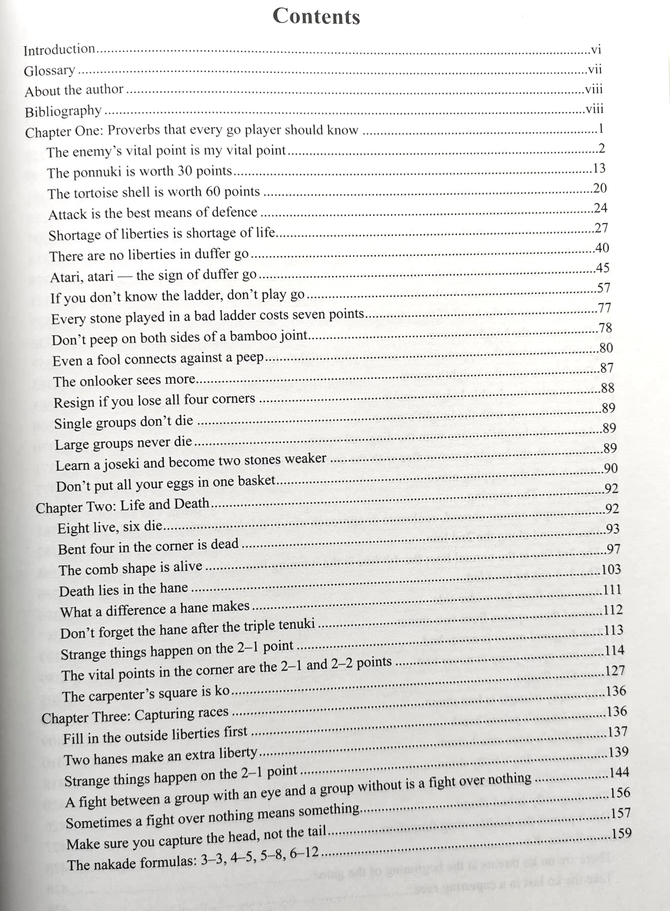
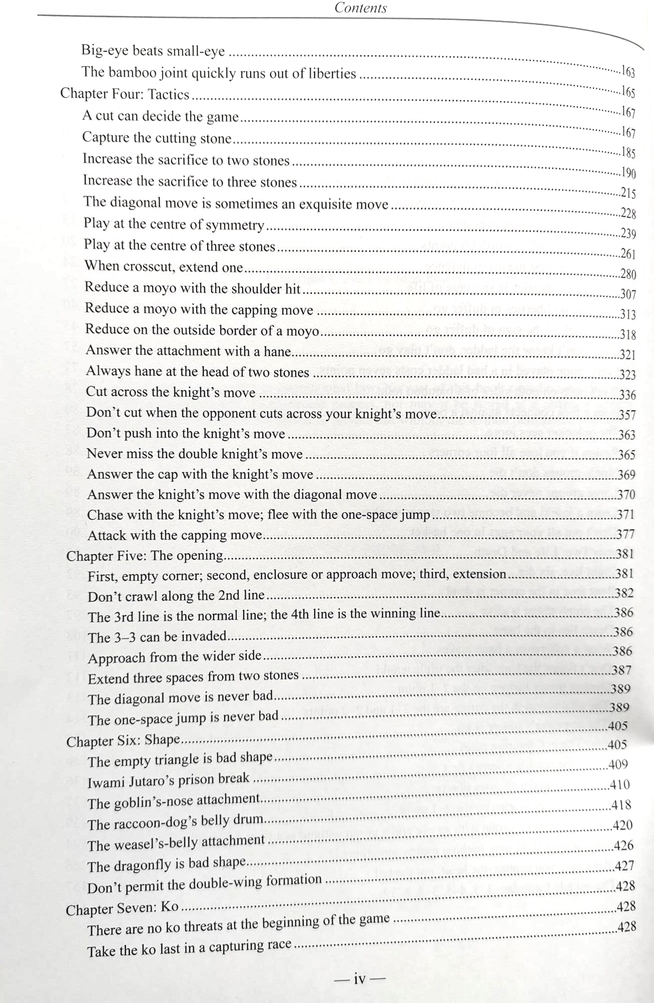
This is the quintessential book on Go proverbs and Go concepts. It is hard to not fall into using superlatives describing John Powers’ Magnum Opus, but it really could be the most dense and all-encompassing book on Go proverbs of any language, written over 45 years. What makes this book so impressive is how complete it feels, including easily understandable explanations, practice examples and Go problems to test your understanding of the concept, all the way to much more elaborate applications of any proverb and even examples of exceptions to any rule that you should be aware of.
With its mix of in depth explanations and Go problems that range from simple applications to devious tricks and caveats, it offers content that will accompany you on your way from 20k all the way to 1d, at which point you still won’t be good enough to apply every single concept in this compendium.
The first three chapters on “Essential proverbs every Go player should know”, “Life and Death” and “Capturing Races” are intentionally aimed at less experienced players, so that everyone can find a welcoming introduction to the book. The first chapter in particular is a highlight of the most important missteps to avoid if you want to move out of the lower DDK range. From understanding why a Ponnuki is so strong, over explaining when and when not to use peeps to showing why taking away your own liberties is such an easy and fatal mistake to make, all proverbs are well communicated and important in their own right.
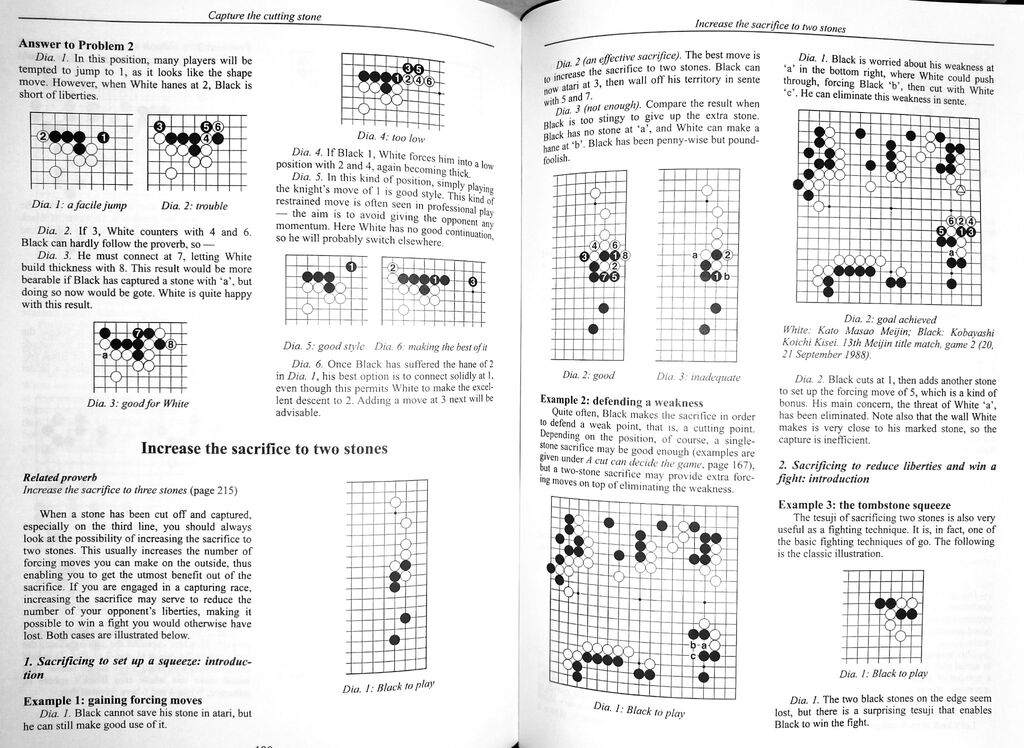
If you are a more experienced player up to 1d, you will be forgiven browsing through the first few chapters and wondering if this book might not offer enough advanced input for its rather steep price tag of 75€ for a printed version. Worry not, the later chapters on tactics and strategy have what you are looking for. From extensive explanations on the surprising impact of cuts, sacrifices or strategies of reduction, the book has an extensive list of inspiring concepts to immediately try and practice. As an EGF 1d player, I still have many chapters in this book that I have no mastery over.
As a last thing of note, I want to mention the Go problems once more that are included with every proverb. It cannot be understated how good they are at a) showcasing the basics of any proverb, b) allowing you to practice easier and harder variations depending on your skill level and c) showing you important exceptions or caveats, which often allows even the simplest proverbs to still teach a more advanced learner a new trick or two.
It is a book that will accompany you for a long time, giving you as much guidance as you can take on any given level. The printed version is expensive, very large and sometimes hard to find, but very much worth it. If you dont mind reading a digital version, buying the digital version on SmartGo for 25€ is probably the best value for Go content money can buy.
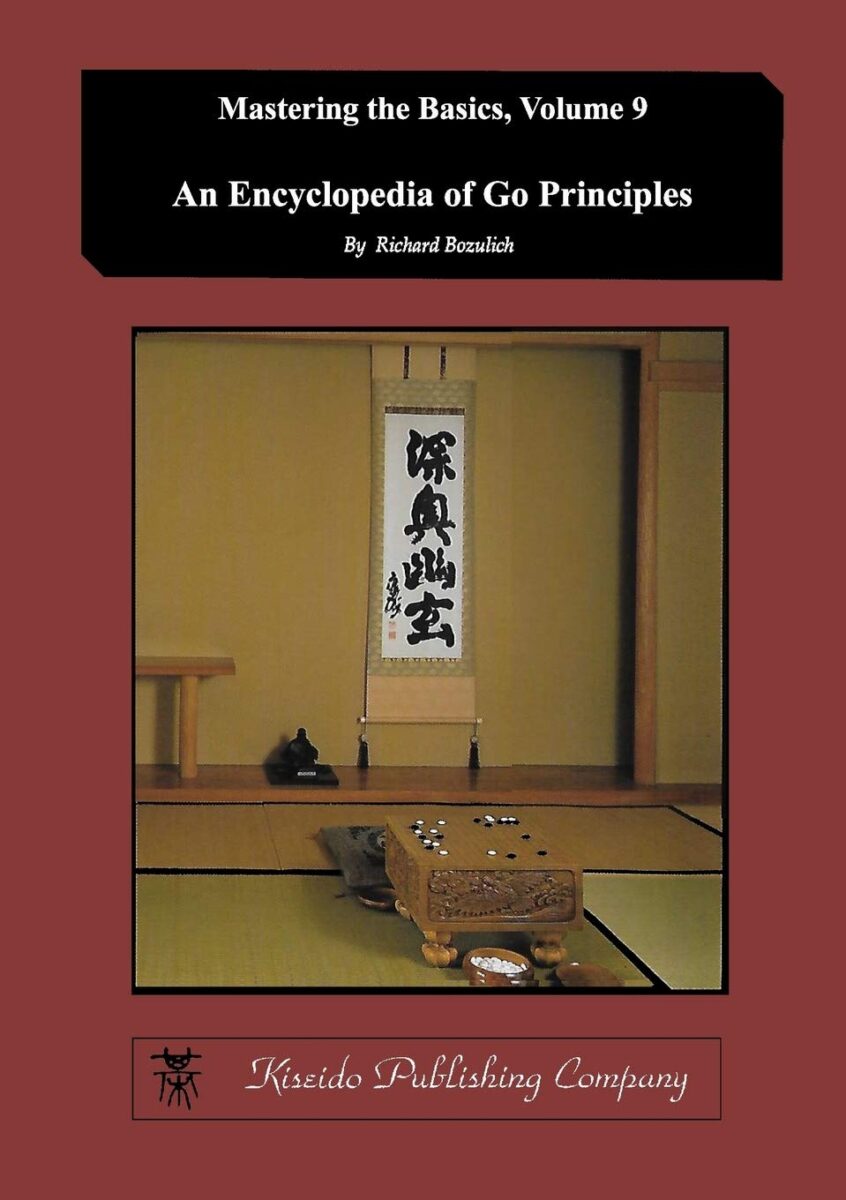
By: Richard Bozulich
This book deserves a short mention for being one of the best books on Go proverbs before John Powers’ book got released. It has a very similar focus and contains a similar amount of proverbs. Without Go problems, less extensive explanations and its resulting smaller book size, it is much more transportable and especially more affordable. if you want a more lightweight option that you can read on the beach without a heavy duty book stand and that doesn’t break your bank account (as it comes in much cheaper at 25€), this Encyclopaedia still absolutely knows how to suit your needs as an inclined learner of the game of Go.
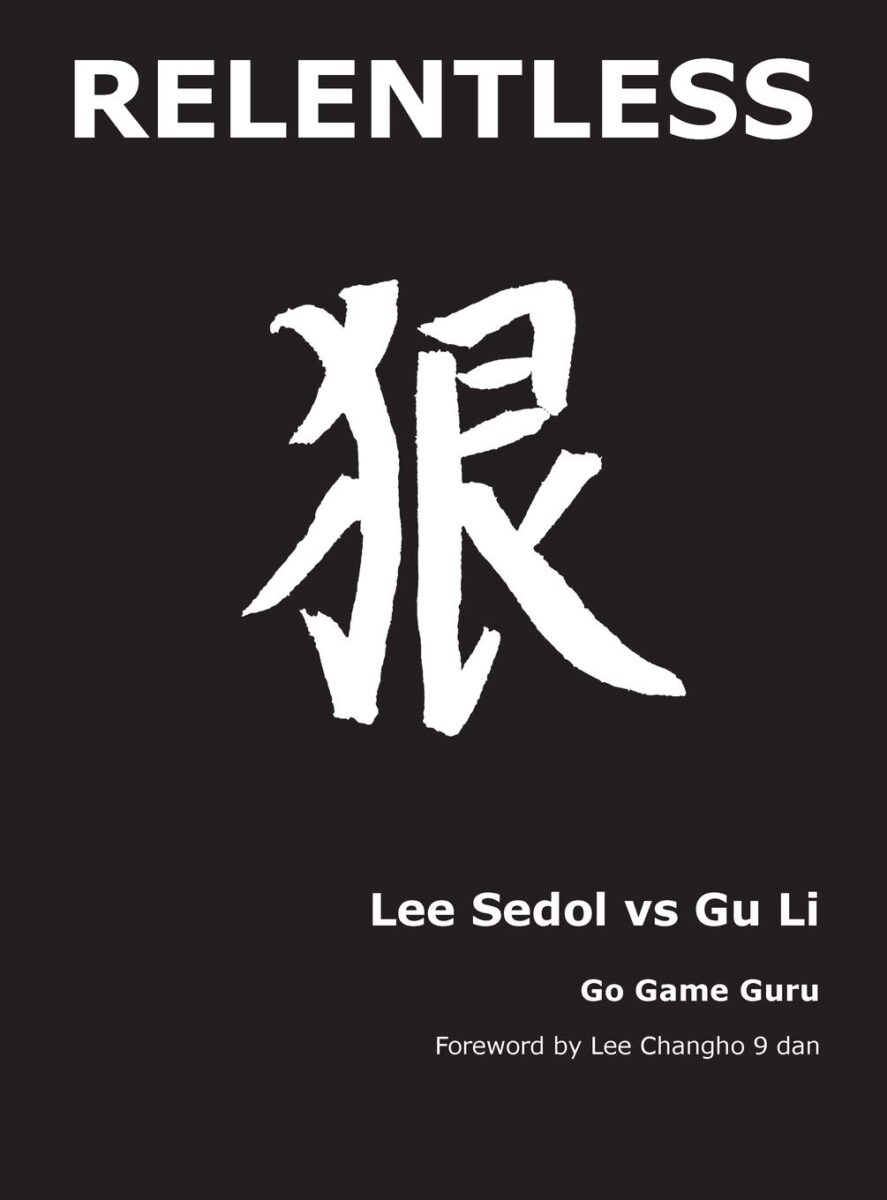
By: Younggil An, David Omerod
“In ancient times there were four arts which educated people sought to master.They were: music, go, calligraphy and painting. Among these four arts, go is unique in being the only one that requires a partner. No matter how skilled a master is, they cannot create a work of art unless they have a worthy adversary.”
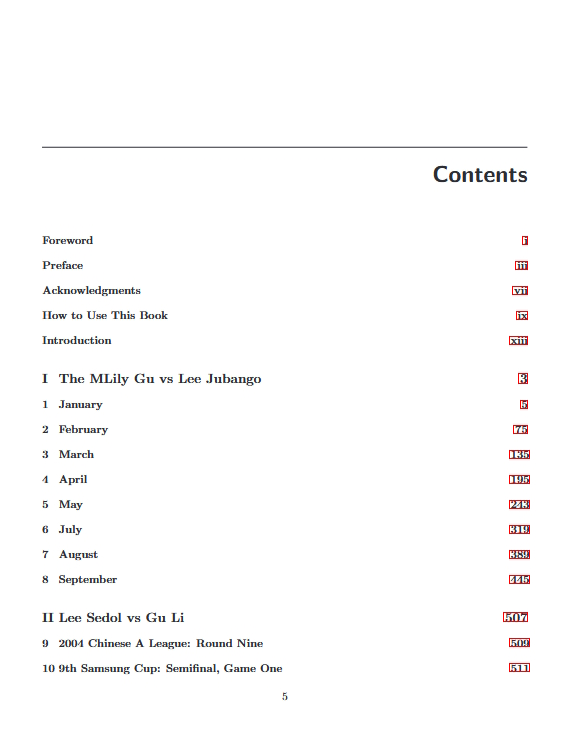
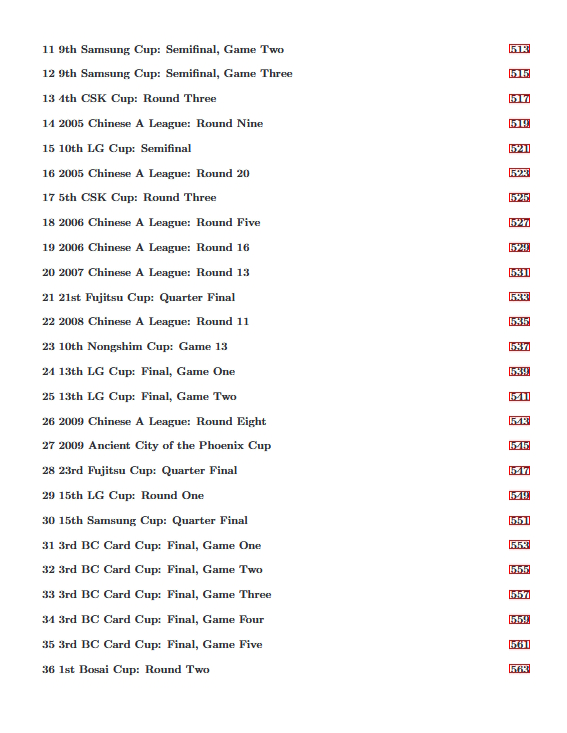
This book will always have a special place in my heart, as it is the first Go book I bought and loved as a 20 kyu. I keep reading it every year and even after 8 years and me finally reaching a dan rank, I still haven’t learned everything this book is offering to teach me.
It is another chunky book similar to “Essential Go Proverbs”, with a large focus of onboarding less experienced players and slowly introducing them to more intricate concepts, while also offering an endless amount of detailed analysis for strong players as the analysis contained in this book is focussed on a set of 10 games between two of the strongest Go players at the time, including every exciting turn of events that this matchup could potentially offer you.
Game analysis of professional games is an endeavor that is more effective at medium/high skill levels, as the variations and explanations are often far beyond the grasp of a DDK learner. So why am I still recommending it for this guide? It is the only pro game analysis book that makes itself approachable to beginners and advanced learners alike. The first page of the analysis is entirely devoted to explaining the very first move of the game for example, which is a level of dedication to beginner learners I have never seen in any other book of this type. Additionally every page and every concept is also explained as a proverb to allow any learner for an easy understanding of the general concept, even if they might not understand the variations.
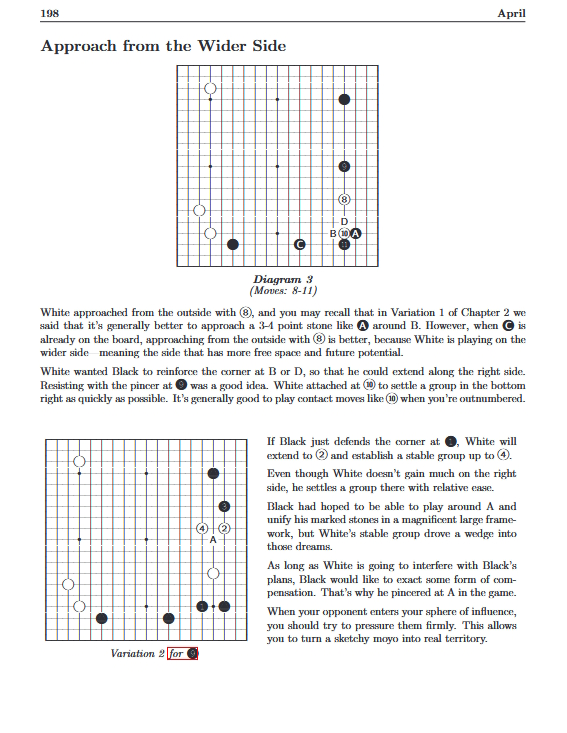
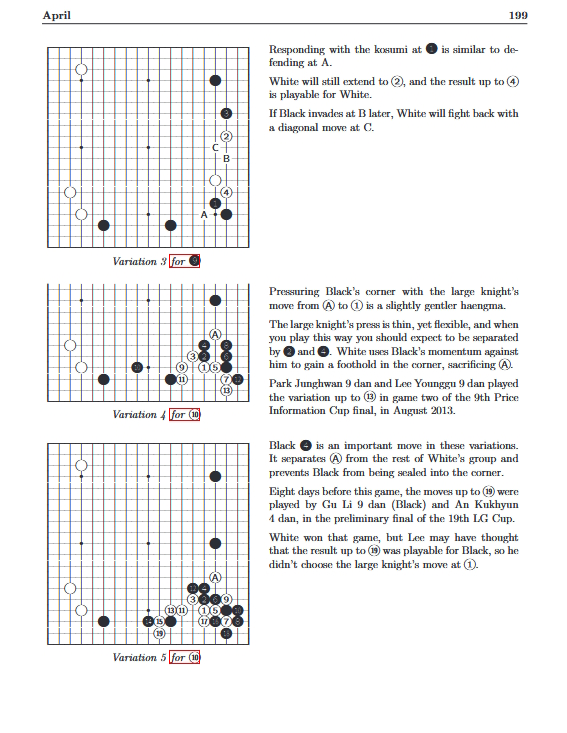
It then goes on to explain the 4-3 point, basic opening shapes and discussing what “flow” of a game means. In every one of the 10 games discussed here, the authors start by peeling back the veil of mystery among even simple moves, so everyone can get a basic understanding of how professionals might approach Go games, while slowly ramping up the difficulty of the concepts explained. If you are still relatively new to learning strategic concepts in Go, you might read 5 pages for a match, skip more intricate joseki discussions, read 5 more pages of generally applicable opening ideas and then skip the mid game considerations if they get too deep for you and continue to the next game for now. A year later, you will reread the chapters and realize that the joseki discussions now open up for you. At 10k all the midgame and endgame considerations start making sense and once you breach 5k, you will start to admire the intricacies of fighting on display here.
Learning all of these concepts in a real game gives you an entirely different appreciation of tempo and shapes, how all concepts of Go work together to create a whole, instead of being only disjointed “principles”. You will start to appreciate the wisdom of opening strategy and see how it evolves, understanding these strategies on a much more profound level. It is a Go book unlike any other, accompanying you throughout your learning experience, games that will over time be very familiar to you and still show a new facet every single year you look at them. The book is hopelessly out of print, but you can download it for free here and print it yourself.
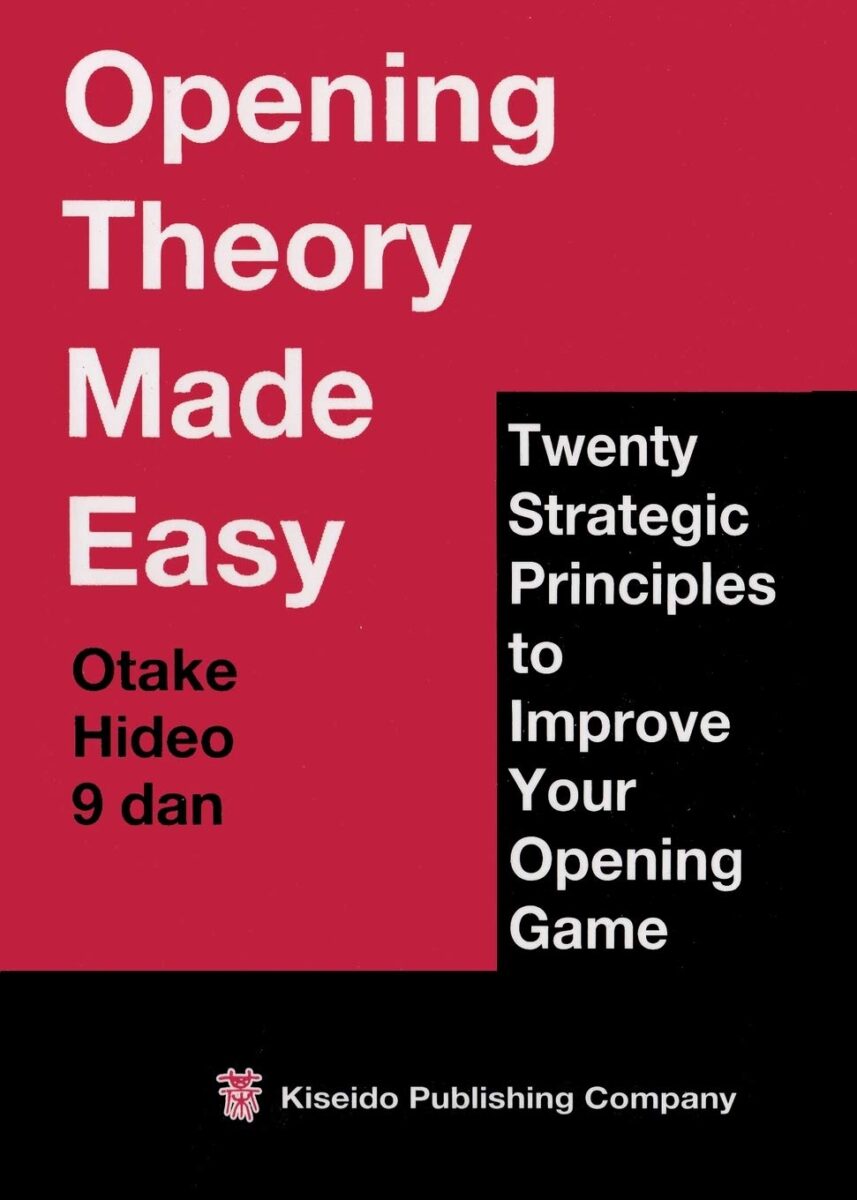
By: Otake Hideo
“Judging what the biggest moves in the opening are can be perplexing. Everything is too vague – it’s hard to establish a criterion for evaluating different moves. Yet if you neglect the fuseki, you can’t hope to make progress at go. After all, it’s the basis of your whole game.”
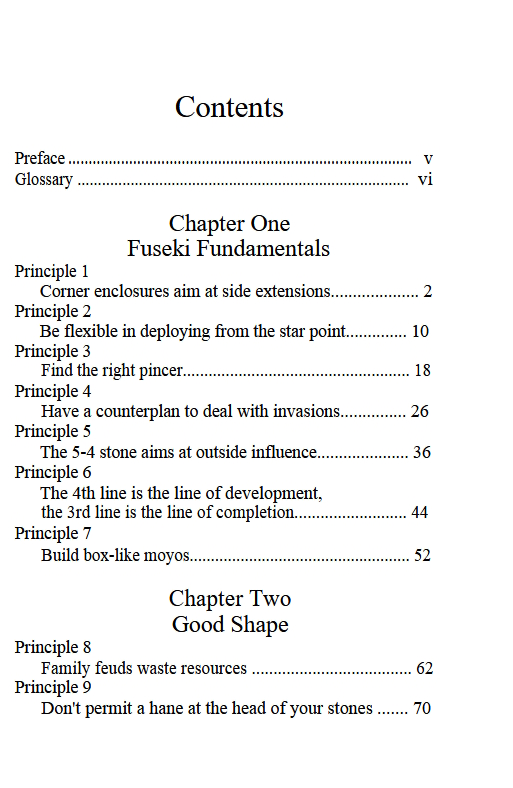
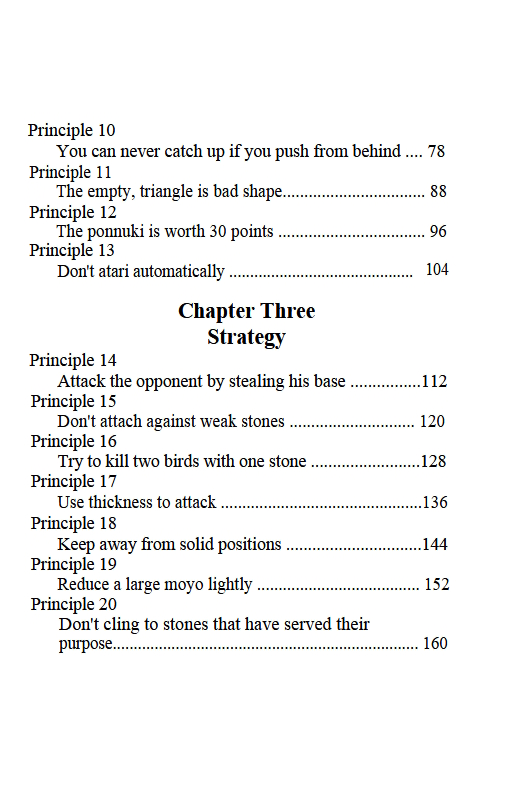
The opening is a mystery to everyone. There are plenty of professional players who would argue that stones in the early opening don’t matter anyway, so just play wherever you want and then go from there. It is a very inspiring and refreshing take, but I suppose the vast majority of people reading this article are not professional players and as such some guidelines help to bring some order to the endless possibility an empty board provides.
While there are plenty of books introducing joseki, there aren’t that many on openings and even fewer that take the time to explain fundamental concepts. We are very lucky to have this book as it is an incredibly useful addition to any Go library with its very understandable writing style, easily digestible proverbs and a good selection of lectures that actually build a very solid foundation for any beginner.
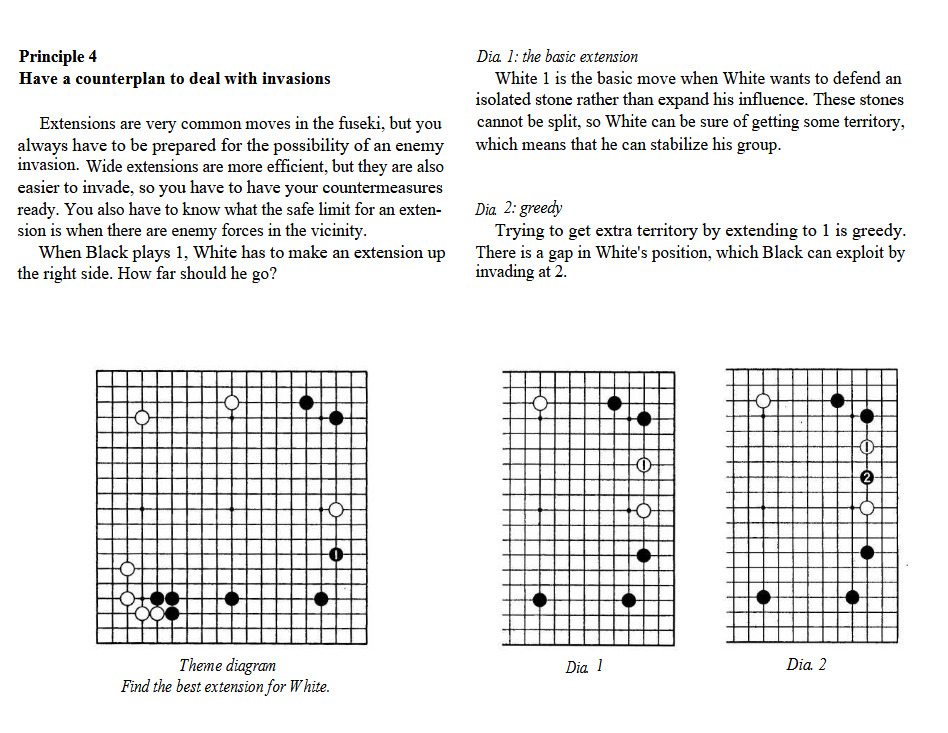
The book is split into three chapters: Opening Fundamentals, Shape and Strategy. The first chapter explains very basic ideas of what to focus on in the opening, different type of enclosures, their effects on different sides of the board, how to extend from enclosures and getting a basic understanding of what you might want to look for in the first few moves and how they might shape the future of the game. It is not exhaustive, as no book on this matter could be, but it is easily understood through its many diagrams and gives more than enough fundamentals so that the opening won’t be quite as mysterious anymore.
The next chapter focusses on shapes, which adds nicely onto the basic opening concept introduced in chapter 1. It gives some general ideas which shapes to avoid, like preventing a hane at the head of 2 stones, or understanding the value of a ponnuki. It does not necessarily add to the understanding of the opening itself, but combined with the ideas from chapter 1 contextualizes how you might be able to start thinking about broader strategic concepts in chapter 3. As such, the last chapter is a bit more complex, but nicely introduces concepts such as developing by attacking a weak point, strengthening its moyo and when and where to reduce.
Any of the concepts introduced in this book honestly merit an individual exploration for its own 12 part book series, but Otake Hideo did an admirable job trying to collect fundamentals of different areas of the game to build a somewhat full understanding of how opening concepts start, develop and ultimately result in a flow of the game advantageous to you.
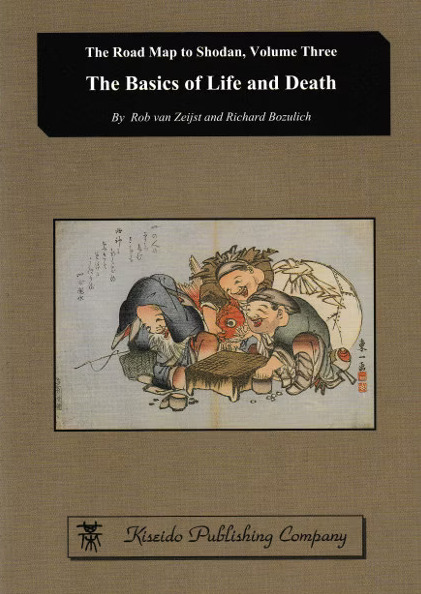
By: Rob van Zeijst & Richard Bozulich
“The fundamental concept of life and death is that of eye space. Once this concept is fully grasped and the properties of various eye spaces are understood, the three most important tesujis of life and death can be introduced: hane, the placement and the throw-in tesujis.”
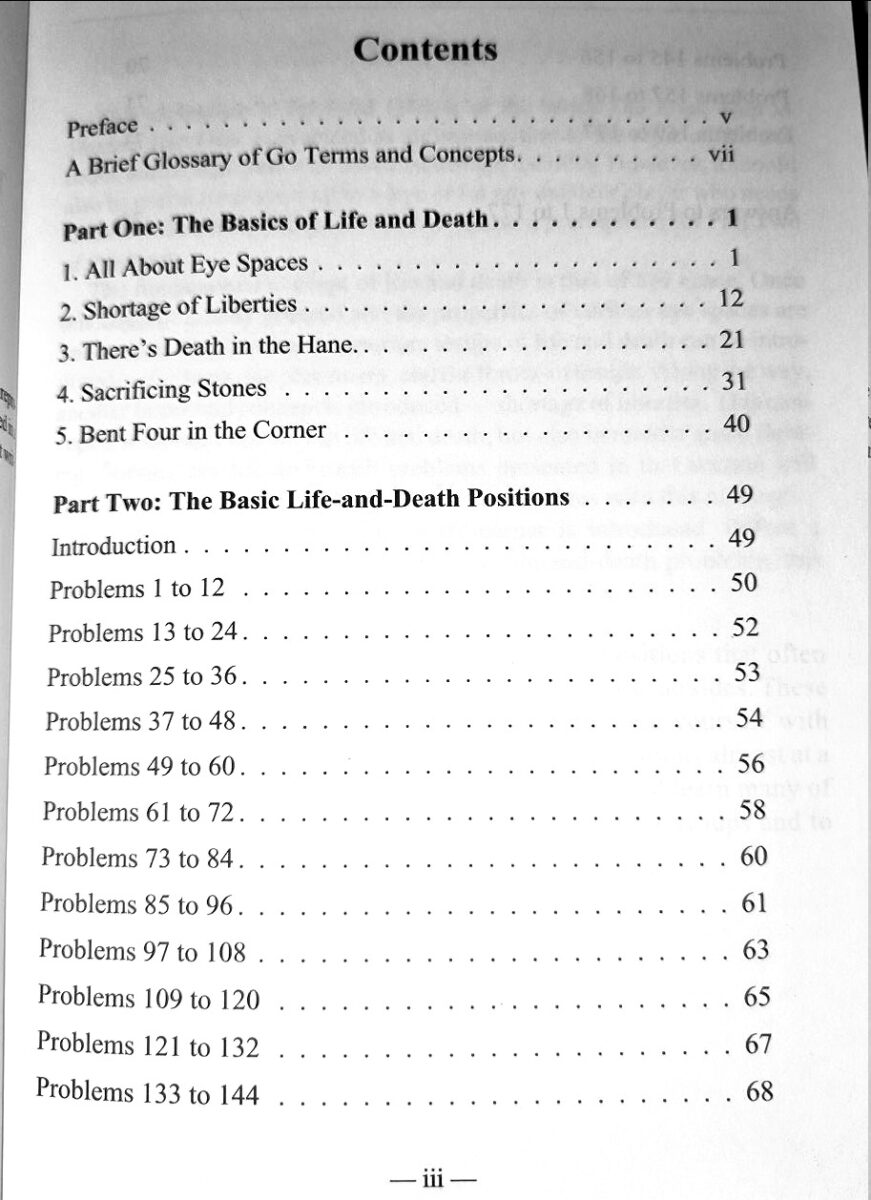
While Go as a whole spans strategy, balance, and adaptability, life and death problems are the foundation on which effective play is built. Bozulich delivers a comprehensive yet accessible guide that is an essential companion for players ranging from 20k to 10k for the most important corner shapes and life and death concepts.
The book begins with the fundamentals, covering the core concepts of eye shape, liberties, and common patterns that dictate life and death scenarios. For beginners, this is an excellent introduction that builds confidence in recognizing critical shapes and their implications. The early chapters, which focus on understanding two-eyed shapes and basic killing or living techniques, are presented with clear diagrams and explanations of each concept that ensure accessibility for even the most novice players, which makes this book a much more welcoming introduction than most life and death collections that usually give no context at all.
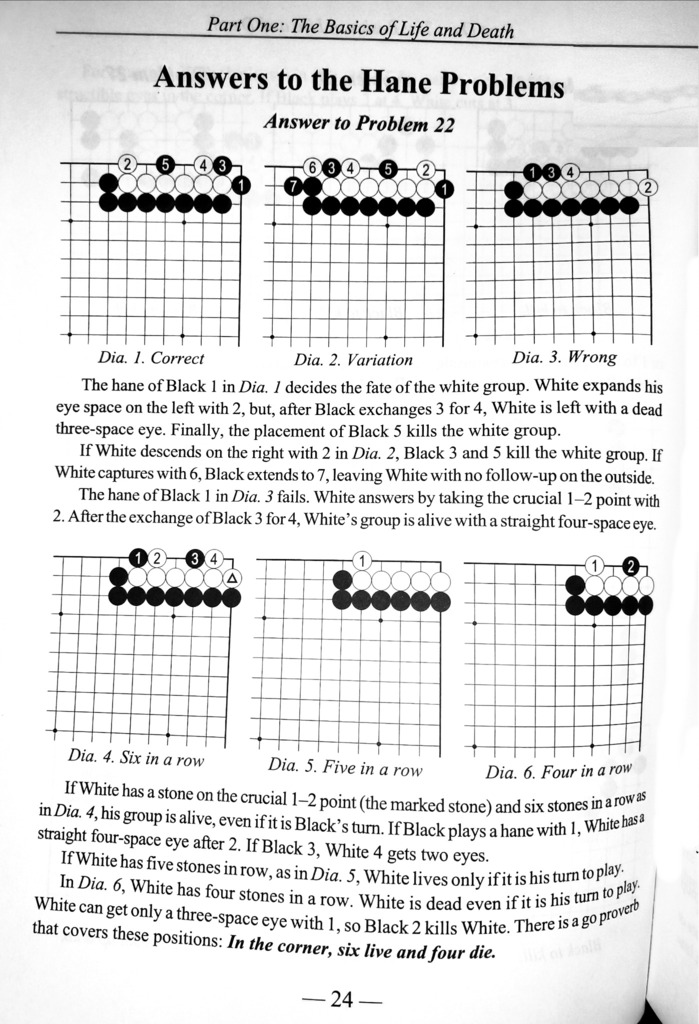
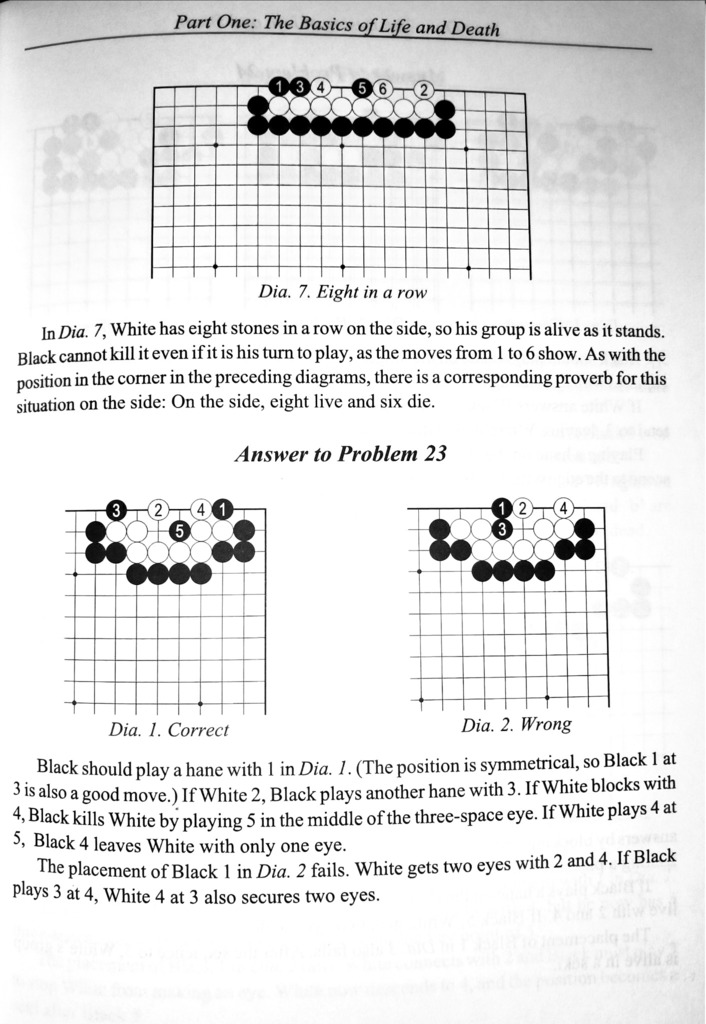
Since this book focusses so much on important corner shapes, the latter half of the book has plenty of shapes that I honestly should know much better than I do as a dan player, which just goes to show how far the problems in this book will get you. Any shape here is a shape that you will very likely see in a real game at some point. The book doesn’t allow you to practice hundreds of easy life and death problems for which many tsumego apps/websites are better suited, but instead plays to the strength of a physical medium allowing you to contemplate and learn more about any shape you might not have encountered with helpful comments and… yes, proverbs. I highly recommend treating this book as a study book to accompany your digital life and death practice.
Last Words
That’s it for today’s magical book club! Thank you for joining me on this literary adventure. If you learn most concepts in these books, you will have easily breached 10 kyu or likely even higher. See you in the upcoming SDK magical book club guide!
Feel free to add some comments and suggestions below the article.
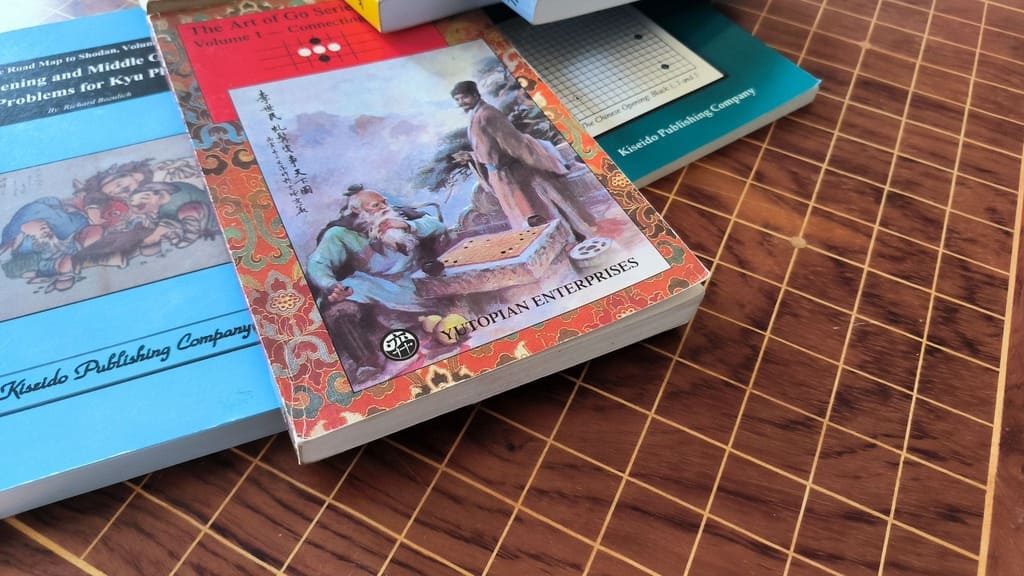
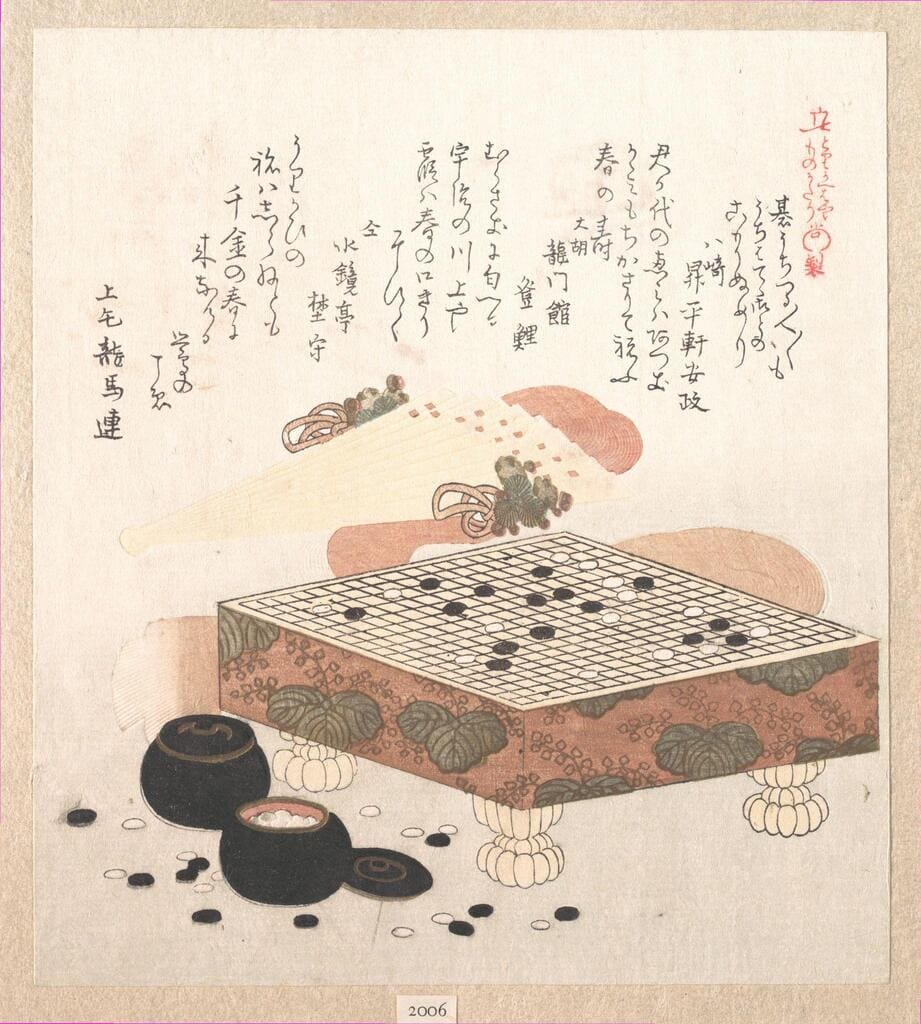


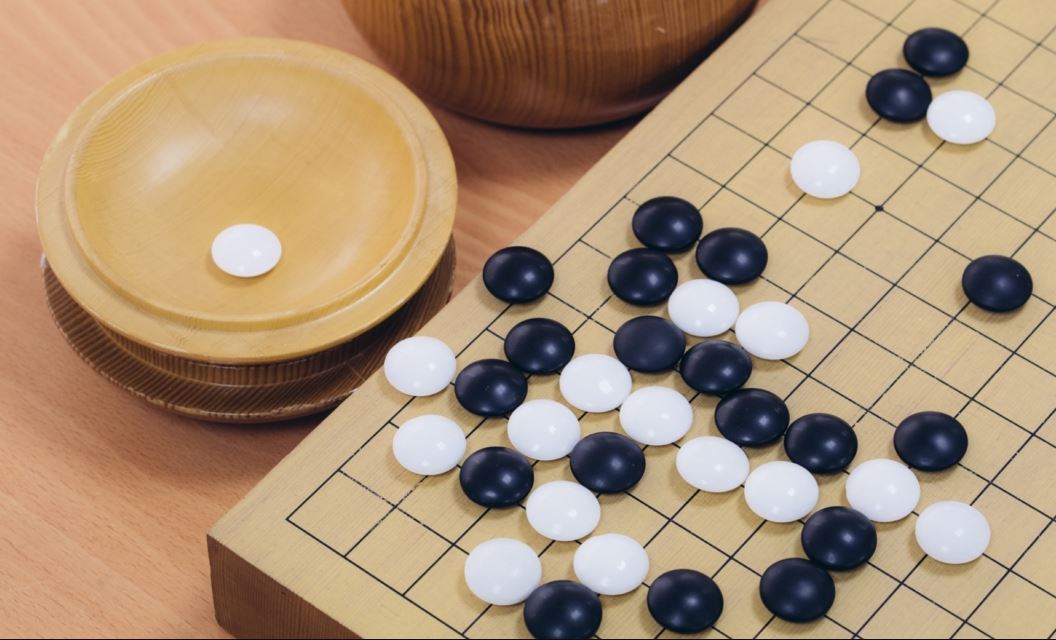
Оставить комментарий